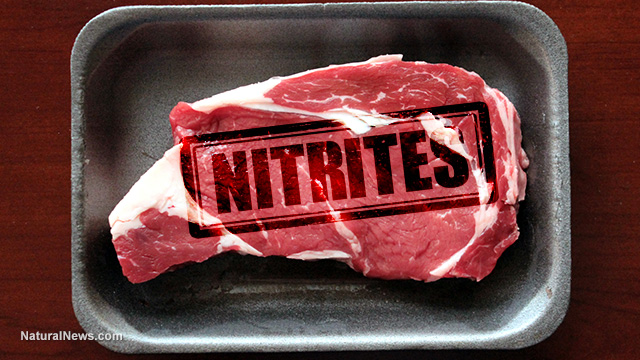Did you know that you have E.coli in your body right now? Some strains are actually needed for your survival
08/14/2018 / By Zoey Sky

In the U.S., most food poisoning cases are caused by E. coli outbreaks. Still, it’s important to know that while some strains of E. coli are indeed harmful to humans, not all types are pathogenic. You even have different strains of E. coli in your intestines, such as a strain of the bacteria that can produce the vitamin K that it also needs to survive. This important antioxidant also offers various health benefits.
E. coli and other bacteria
Scientists usually characterize E. coli by the sugar coat displayed on their cell surface. For example, lipopolysaccharide, a molecule, functions as an anchor that “displays a collection of sugars to their environment.”
Bacteria need these sugars so the former can attach themselves to surfaces and show their identity to the immune system. Human cells also use sugars to reveal your blood type via sugars displayed on the blood cells.
The sugars that E. coli display can change, depending on the strain of the bacteria. There are sugar coats connected to strains that have a harmonious relationship with your stomach, like E. coli HS, UTI89, and CFT073. These strains are particularly helpful to your health.
Meanwhile, other strains may cause illness, like E. coli O104:H4 (or enterohemorrhagic E. coli [EHEC]), which caused a major outbreak in Europe back in 2011. The Centers for Disease Control and Prevention (CDC) reported that this latest outbreak was caused by E. coli O157:H7, a strain that’s also the cause of about one foodborne outbreak in the U.S. yearly since 2006. (Related: 48 million people in the U.S. get food poisoning each year; new report reveals the most common germs making us sick.)
The power of the elements: Discover Colloidal Silver Mouthwash with quality, natural ingredients like Sangre de Drago sap, black walnut hulls, menthol crystals and more. Zero artificial sweeteners, colors or alcohol. Learn more at the Health Ranger Store and help support this news site.
The letters and numbers that name a strain act as a code that identifies the sugars present in a strain of bacteria. While the sugars bacteria display doesn’t directly cause illnesses, they’re very easy to detect. Healthcare experts and scientists use these displays to determine if a present strain can eventually generate toxins that can spread diseases.
Bacteria require virulence factors or molecules that help ensure their survival while also weakening the immune system. For instance, EHEC and O157, which are both strains of E. coli, can produce a virulence factor called a Shiga toxin. Shiga toxins were first discovered in Shigella dysenteriae, the bacterium that causes dysentery.
Further research confirmed that the EHEC and O157 strains of E. coli now had the gene for Shiga toxins from the dysentery bacterium. This was made possible via a process called horizontal gene transfer.
Take note that it’s not the bacteria themselves that cause illnesses and different symptoms but virulence factors. When you consume contaminated food, the bacteria in your body reach a critical mass. Once this happens, the bacteria produce these toxins while they search for a new host. The toxins enter the cells of the intestines, and this results in various symptoms such as (bloody) diarrhea, low-grade fever, stomach cramps, and vomiting.
Here are the details of the latest multistate E. coli outbreak in the U.S., per the CDC:
- To date, there are 197 reported cases of E. coli infections in 35 states. There have been five deaths and 89 hospitalizations so far, and there are no reports of a recall.
- As of June 1, 2018, 25 ill patients from 13 states were added to the ongoing investigation since the last update on May 16, 2018.
- The states of Arkansas, North Carolina, and Oklahoma have reported sick individuals.
- Four more deaths have been reported: one from Arkansas, two from Minnesota, and one from New York.
- It may take about two to three weeks for an individual to feel ill because of E. coli and when the illness is reported to the CDC.
- The majority of people who recently became ill consumed romaine lettuce when lettuce from the Yuma growing region was probably still being sold in stores or served in restaurants or in homes. Those who became sick did not report eating romaine lettuce. However, they had close contact with a patient who became ill after eating romaine lettuce.
- Based on data gathered to date, romaine lettuce that came from the Yuma growing region might have been contaminated with Shiga toxin-producing E. coli O157:H7. This toxin is the cause of the recent infections.
- Per the Food and Drug Administration (FDA), the last shipments of romaine lettuce from the Yuma growing region were gathered last April 16. Now that the harvest season is over, it’s possible that romaine lettuce from the region no longer exists in people’s homes, stores, or restaurants since the vegetable only has a 21-day shelf life.
Fast facts about E. coli
- E. coli is a bacteria that is usually found in the lower intestine of warm-blooded organisms.
- While most E.coli strains are harmless, there are some that can cause severe food poisoning. For example, Shiga toxin-producing E. coli (STEC) is a bacterium that is responsible for serious foodborne illnesses.
- A STEC outbreak is often caused by the fecal contamination of vegetables or the consumption of undercooked/raw ground meat products.
- STEC is heat-sensitive and contamination can be prevented by cooking food thoroughly.
Learn more about E. coli and foodborne diseases at Prevention.news.
Sources include:
Tagged Under: bacteria, bacterial contamination, digestion, digestive health, Diseases, E. coli, Escherichia coli, food poisoning, food safety, food safety tips, foodborne illnesses, gut health, Shiga toxins, Shigella dysenteriae




















